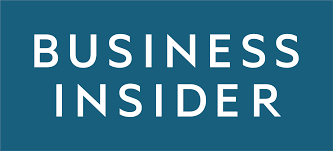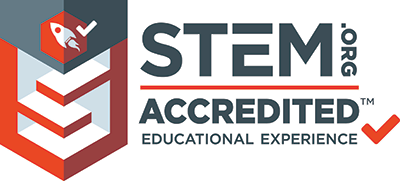
AP Calculus Tutor for Personalised, On-demand Tutoring to achieve 4+ Scores
Get expert tutoring help from AP Calculus AB and BC Online Tutors.
Our AP Calculus Tutoring service is affordable and rated the best by parents who opted for our service (4.7 out of 5 on TrustSpot).
Book FREE AP Tutoring class now by clicking on the button below.
Find the Best AP Calculus Tutor at eTutorWorld
If you are looking for an AP Calculus Tutor, then you are at the right place.
Book an AP Calculus Tutoring Class with Expert AP Calculus Tutors from the comfort of your home.
At eTutorWorld, you get AP Calculus Tutoring and Homework Help for both AP Calculus AB and AP Calculus BC Courses.
Connect with the Best AP Calculus Tutors to help you with calculus problems, be it Limits & Continuity or Differential Equations.
Our platform offers you the benefits of Affordable, Personalized, and Convenient AP Calculus Tutoring that help you ace the tests and improve your grades.
Join eTutorWorld for a free class of AP Calculus Tutoring and find out how eTutorWorld can help you in AP Calculus Course.
Download AP Calculus Worksheets
Our AP Calculus Tutors

Abirami
AP Calculus Tutor
Post Graduate in Math and in Computer Applications
10,000+ hrs of Tutoring
I’m Abirami and I have been a math tutor for 28 years. I hold a M.Sc degree in Mathematics and a postgraduate in Computer Applications (PGDCA). Currently, I am working as an online tutor at Etutorworld. I have a passion for teaching math to children of all ages. In my free time, I enjoy cooking and traveling. My favorite topics to teach are Algebra and Geometry. Over the years, I have gained 15 years of experience in online teaching. I am dedicated to providing quality education and helping students excel in math.

Chaganti
AP Calculus Tutor
Master in Math
10,000+ hrs of Tutoring
I’m Chaganti, a seasoned Math tutor. I hold a Bachelor’s degree in B.Sc. (Maths Physics Chemistry) and a Master’s degree in M.Sc (Mathematics) and also an M.Phil in Fixed Point Theory. With over 20 years of teaching experience, I have served as a senior math faculty in various colleges. My expertise lies in teaching classes for plus 1, plus 2, and JEE-Maths. In my free time, I enjoy listening to classical songs and spending quality time with children. My favorite topic to teach is Critical Points in Calculus. With 3 years of experience as a tutor, I am committed to providing quality education and helping my students excel academically.

Kamal
AP Calculus Tutor
Engineering Graduate in Mechanics
1,000+ hrs of Tutoring
I’m Kamal, a passionate and dedicated online tutor. With a Bachelor’s degree in Mechanical Engineering, I have been serving as a tutor for the past two decades. I have experience teaching students both offline and online. Mathematics and Mechanics (Physics) are my favorite subjects to teach, as I find them fascinating and love to delve into the intricacies of these topics. When I’m not teaching, you can find me engrossed in books, tending to my garden, or enjoying some soulful music.
AP Calculus Online Tutoring
We offer more than 30 courses and AP Calculus is one of them.
AP courses enable students to pursue college-level studies while still in high school.
Students can also earn course credits or advanced placement, or both by scoring high in the AP exams.
AP Calculus covers the study and application of limits & continuity, differentiation, and integration.
This course is divided into two different parts: AP Calculus AB and AP Calculus BC.
AP Calculus AB covers the basics of derivatives, integers, and limits.
AP Calculus BC is an extension of Calculus AB and is more advanced than AP Calculus AB. It covers more advanced and in-depth topics like Parametric Equations, Polar Coordinates, and Vector-Valued Functions.
AP Calculus is an advanced-level course and it can get difficult for students to prepare for the test without expert tutors.
Our qualified tutors at eTutorWorld prepare students for 3+ credits with highly personalized lesson plans.
AP Calculus Units
AP Calculus is for you if you have an aptitude for math. But this subject tends to be complicated and you may require the help of experienced AP Calculus tutors.
eTutorWorld’s AP Calculus tutors guide you perfectly towards determining the values and expressing the solutions using proven mathematical tactics.
AP Calculus Course also enables you to use the correct terms and notations for communicating the results once you find the solution.
The entire course for AP Calculus AB & BC is divided into 10 units. You may check out the percentage of questions expected from each unit by looking at the chart below.
Note: You may not take both AP Calculus AB and Calculus BC Exams within the same year as both exams are taken on the same date.
AP Calculus (AB) Units
| AP Calculus (AB) | Percentage of Qs Expected | Multiple Choice Questions | Free Response Questions | Approx number of Sessions |
|---|---|---|---|---|
| Unit 1: Limits & Continuity | 10%-12% | 45 | 3 | 12 |
| Unit 2: Differentiation: Definition and Fundamental Properties | 10%-12% | 30 | 3 | 13 |
| Unit 3: Differentiation: Composite, Implicit, and Inverse Functions | 9%-13% | 15 | 3 | 10 |
| Unit 4: Contextual Applications of Differentiation | 10%-15% | 15 | 3 | 12 |
| Unit 5: Analytical Applications of Differentiation | 15%-18% | 35 | 3 | 12 |
| Unit 6: Integration and Accumulation of Change | 17%-20% | 25 | 3 | 18 |
| Unit 7: Differential Equations | 6%-12% | 15 | 3 | 10 |
| Unit 8: Applications of Integration | 10%-15% | 30 | 3 | 13 |
AP Calculus (BC) Units
| AP Calculus (BC) | Percentage of Qs Expected | Multiple Choice Questions | Free Response Questions | Approx number of Sessions |
|---|---|---|---|---|
| Unit 1: Limits & Continuity | 4%-7% | 45 | 3 | 10 |
| Unit 2: Differentiation: Definition and Fundamental Properties | 4%-7% | 30 | 3 | 9 |
| Unit 3: Differentiation: Composite, Implicit, and Inverse Functions | 4%-7% | 15 | 3 | 9 |
| Unit 4: Contextual Applications of Differentiation | 6%-9% | 15 | 3 | 7 |
| Unit 5: Analytical Applications of Differentiation | 8%-11% | 35 | 3 | 8 |
| Unit 6: Integration and Accumulation of Change | 17%-20% | 35 | 3 | 15 |
| Unit 7: Differential Equations | 6%-9% | 20 | 3 | 8 |
| Unit 8: Applications of Integration | 6%-9% | 30 | 3 | 12 |
| Unit 9: Parametric Equations, Polar Coordinates, and Vector-Valued Functions | 11%-12% | 25 | 3 | 8 |
| Unit 10: Infinite Sequences and Series | 17%-18% | 45 | 3 | 14 |
No credit card required. No obligation to purchase
AP Calculus Exam Format
The AP Calculus Exams seek to assess how well a student is acquainted with calculus concepts and techniques. AP Calculus has two sets: AP Calculus AB & AP Calculus BC. Each set consists of two sections:
| AP Calculus Sections | Number of Questions | Time Alloted |
|---|---|---|
| Section 1 | 45 Questions (Multiple Choice) | 1 Hour and 45 Minutes or 105 Minutes |
| Section 2 | 6 Questions (Free Response) | 1 Hour and 30 Minutes or 90 Minutes |
The total time allotted for each AP Calculus Exam is 3 hours and 15 minutes.
In determining the scores, both Section I and Section II are given equal weight.
AP Calculus AB & BC Course: Section 1
Section 1, the multiple-choice section of each AP Calculus exam, consists of 45 questions. Section 1 of each AP Calculus Test is further divided into Part A and Part B:
| Section 1 | Numbe rof Questions | Time Allotted | Use of Calculator |
|---|---|---|---|
| Part A | 28 Questions (Multiple Choice Based) | 55 Minutes | Calculator Not Allowed |
| Part B | 17 Questions (Multiple Choice Based) | 50 Minutes | Graphing Calculator Allowed |
AP Calculus AB & BC Course: Section 2
Section 2, the free-response section of each AP Calculus exam, consists of 6 questions. Section 2 of each AP Calculus Test is further divided into Part A and Part B:
| Section 2 | Number of Questions | Time Allotted | Use of Calculator |
|---|---|---|---|
| Part A | 2 Questions | 30 Minutes | Graphing Calculator Allowed |
| Part B | 4 Questions | 60 Minutes | Calculator Not Allowed |
Note: There is no negative marking for incorrect answers or unanswered questions in AP Calculus Exam.
Students can take the help of AP Calculus Expert Tutors at eTutorWorld for the preparation of both AP Calculus AB & BC courses. eTutorWorld AP Calculus Online Course is aligned with the latest AP Curriculum. Free AP Calculus Diagnostic Test Helps to determine students’ knowledge of AP Calculus.
AP Calculus Tutoring Course
AP Calculus Online Tutoring Course at eTutorWorld is provided by the Expert AP Tutors. This Course is started with diagnostic tests to check the students’ knowledge gap. Based on that, a personalized AP curriculum is designed by the tutors. Our AP Calculus Tutoring sessions are fully private (one-on-one) and live. eTutorWorld always in delivering world-class Tutoring services to all students that are affordable to all. Every AP Calculus Tutoring session has 50 to 55 minutes of learning time. Moreover, we also offer the AP Calculus Worksheets to cement the topics and concepts learned during the Tutoring sessions.
Pricing for Online Tutoring
1 Session
- 1 Month Validity
5 Sessions
- 1 Month Validity
10 Sessions
(Most Popular)- 3 Months Validity
20 Sessions
- 4 Months Validity
50 Sessions
- 6 Months Validity
Book a free class with an eTutorWorld expert and experience Learning by Design with experienced and expert mentors. You can book this class at your preferred date and time.
No credit card required. No obligation to purchase
Benefits of AP Calculus Tutoring at eTutorWorld
Personalized Approach
Our tutors create customized lesson plans based on diagnostic tests to cater to the specific learning needs of every kid. We understand that every child has different strengths, and our tutors create a plan that is suited just right for your child.
Customized Lesson Plans
Before the tutoring sessions begin, we conduct Diagnostic Tests to assess students’ skills and abilities. Our tutors use this test to gauge the learning needs of every student to identify areas that need to be focused in their customized learning plans.
Regular Assessments
Regular assessments are crucial in gauging a students’ progress with the lesson plan. After all the lessons and courses, a review of the improvement is done and is also shared with the parents.
Highly Qualified Tutors
Every tutor at eTutorWorld has 400 hours of teaching experience and subject matter expertise. We are responsible for each student’s progress and hence take care in selecting tutors.
Private Tutoring
Private tutoring offers undivided attention by eliminating distractions. With 1:1 tutoring, you can ask for any help or doubt from our tutors—private tutoring for better focus, transparency & performance.
Affordable Tutoring
Quality education should not be expensive. That’s why we deliver affordable tutoring to all our students. Each tutoring session has 50 to 55 minutes of learning time & is affordable for all students.
Interactive & Flexible Session
Interactive online tutoring has never been this enjoyable. Here, students enjoy the latest teaching methods and technology that make learning interactive and fun. All our learning technologies are modern and easy-to-use.
Curated Worksheets
Access curated practice tests & worksheets. Practice material cements the understanding of the topics and concepts learned during the tutoring sessions. These curated Worksheets are designed by expert tutors to help students revise the concepts clearly.
24×7 Support
Get 24X7 support through our number (628)-272-0788. A support team is always ready to help you with any technical or other issues. Any query or questions can be resolved quickly from the comfort of your home.
Online Tutoring for AP Calculus – Frequently Asked Questions (FAQs)
AP Calculus AB & AP Calculus BC: What’s the difference?
AP Calculus AB includes the fundamentals of Calculus that is required for gaining admission to top colleges. It will be helpful if you want to pursue the subject academically. Calculus BC includes a few other topics in addition to Calculus AB course. The syllabus is extensive and equal to a year’s curriculum in college. eTutorWorld offers help with all levels of AP Calculus and ensures the best possible test prep
How Do I prepare for the upcoming AP Calculus exam?
Read through the exam description by downloading the details from www.collegeboard.com. Study algebra, trigonometry, and analytical geometry with the help of an eTutorWorld expert. Even you can prepare for AP Calculus Tutoring with our AP Calculus Tutors.
How will a AP Calculus Tutoring Session help me?
You can have an AP Calculus Tutoring Session with our Expert AP Calculus Tutors. This will enable you to learn about our methodology. Decide whether this works for you before you enroll
What is format of the AP Calculus AB exam?
What is format of the AP Calculus BC exam?
Is AP Calculus difficult?
AP Calculus is one of the most difficult AP Tests to pass. Fewer students are able to get more than 4+ scores in AP Calculus. AP Calculus covers difficult topics that are hard to understand. eTutorWorld has Expert AP Calculus Tutors who can help you in understanding the AP Calculus AB & BC topics clearly. You can get Personalized & Interactive AP Calculus Tutoring with our Tutors.
WHAT OUR CUSTOMERS HAVE TO SAY
It was my first experience with an online tutor for my child. During this pandemic it was basically the only way to go. I made the best choice when I choose etutorworld. The tutor was awesome and patient with her and he provided her with ways to study. I will recommend etutorworld to anyone that is seeking to adhere to social distancing and even for future studies. GREAT JOB!!
Aleksey Gaziev
Very good structure and flow of the sessions, materials used are also good - overall very positive experience.
Veronica S Lennon
Excellent quality and service from both an academic and as admin point of view!
Shaivi Shah
Kind, well qualified and very responsible teacher. Would like to try other subjects and want to have my second child tutored. Great value, too.
Leah Dixon
Test names and other trademarks are the property of their respective trademark holders. None of them are affiliated with eTutorWorld Corporation.
IN THE NEWS

Our mission is to provide high quality online tutoring services, using state of the art Internet technology, to school students worldwide.
Online test prep and practice
SCAT
SSAT
ISEE
PSAT
SAT
ACT
AP Exam
Science Tutoring
Physics Tutoring
Chemistry Tutoring
Biology Tutoring
Math Tutoring
Pre-Algebra Tutoring
Algebra Tutoring
Pre Calculus Tutoring
Calculus Tutoring
Geometry Tutoring
Trigonometry Tutoring
Statistics Tutoring
Quick links
Free Worksheets
Fact sheet
Sales Partner Opportunities
Parents
Passive Fundraising
Virtual Fundraising
Our Expert Tutors
Safe and Secure Tutoring
Interactive Online Tutoring
After School Tutoring
Elementary School Tutoring
Middle School Tutoring
High School Tutoring
Home Work Help
Math Tutors New York City
Press
©2022 eTutorWorld Terms of use Privacy Policy Site by Little Red Bird
©2022 eTutorWorld
Terms of use
Privacy Policy
Site by Little Red Bird







